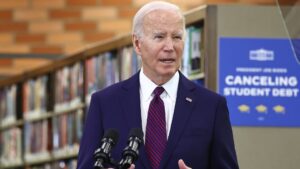Welcome to Extreme Investor Network – Your Source for Personal Finance Insights!
President Joe Biden recently announced a new plan for student loan forgiveness, which aims to provide relief to targeted groups of borrowers. This more focused approach is designed to withstand potential legal challenges while still benefiting tens of millions of borrowers.
Under this new plan, borrowers who are already eligible for debt cancellation under existing government programs but have not yet applied, those who have been in repayment for 20 years or longer on their undergraduate loans or more than 25 years on their graduate loans, attendees of schools of questionable value, and individuals experiencing financial hardship may qualify for debt forgiveness. The definition of financial hardship may include those burdened by medical debt or high child-care expenses.
Additionally, the new plan allows for borrowers to have up to $20,000 of unpaid interest on their federal student debt forgiven, regardless of their income.
A Closer Look at the Critics
Despite the targeted nature of this new forgiveness program, critics argue that it bears similarities to Biden’s previous relief efforts and could face legal challenges. Missouri Attorney General Andrew Bailey, along with five other Republican-led states, previously sued the administration over the constitutionality of broad debt cancellation.
Amidst concerns that debt relief would impact lenders’ bottom lines and accusations of executive overreach, legal experts predict that the new student loan forgiveness plan will also face legal scrutiny once formally released.
Stay tuned to Extreme Investor Network for more updates on the evolving landscape of personal finance and how it may impact your financial future!

